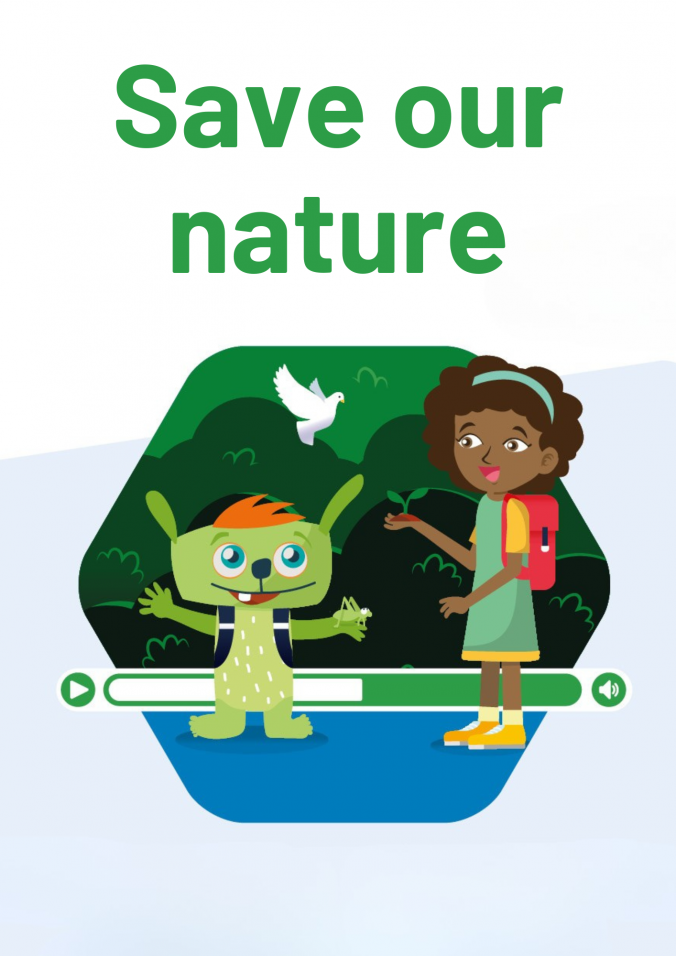Ocean Acidification

Overview
Overview
Keywords: carbon dioxide, pH, acidification, climate change
Subjects: biology
Age group: 6-12 years old
Difficulty level: ● ● ○ (medium)
![]()
![]()
This experiment is part of the unit "Climate Action" written by: Esra Aksoy (TR), Rebecca Mudde (GB), Rute Oliveira (PT), Anastasia Papakonstantinou (GR)
Before doing this activity, students should already know the cause of climate change and how carbon dioxide (CO2) makes the temperature rise as a greenhouse gas. With this experiment, they can learn that ocean acidification causes problems.
Students can comprehend the concepts of cause and result while at the same time cultivating their environmental empathy.
It is an easy experiment to conduct, and it promotes the scientific method (observation – hypothesis – testing – results) for students of younger ages. The easy and illustrative experiment can give pupils an insight into the scientific process. It can get them excited about science and encourage them to choose a scientific career path.
For better understanding the use of the indicator, watch the video "How can we Identify Acids and Bases?".
The experiment
Required materials
- 2 glasses (transparent glasses, not plastic)
- an indicator made from cabbage (a chemical substance that changes colour if a solution is acidic or basic)
- a straw
- deionized water or tap water
To prepare the indicator, you need:
- a few red cabbage leaves
- deionized water or tap water
- a mortar
The kids can make the indicator on their own, but as it gets messy, wearing gloves and aprons is highly recommended.
For instructions for creating the indicator, watch the video:
Experiment guide
This activity can be performed by the teacher for the class, but depending on the age and the autonomy level of the students, they can perform the experiment themselves in small groups.
The video shows the effect carbon dioxide (CO2) has on the pH value of water.
- Fill two glasses with deionized water or tap water.
- Pour approximately two tablespoons of the indicator in each glass. The water should have a purple colour.
- Then blow in one of the glasses with a straw. You will see the colour changing to pinkish.
Notes
This experiment will usually work with tap water. Nevertheless, deionized water is recommended, as not every tap water is neutral but can be slightly acidic or basic in itself. This can affect the colour of the initial solution. The water used should have a pH value close to 7.
The experiment could be conducted by using other indicators, too. But especially in younger ages it is recommended to use red cabbage solution, as it is safer for kids. Bromothymol blue has excellent results, but has a different colour spectrum.
Natural phenomena that occur around us are complex and difficult to replicate in the laboratory, therefore we use models. Models are simplifications of reality that allow us to understand what happens in the real world in a more accessible way.
Questions for students
Suggestions for questions that you could ask the students when the video stops.
- What is the cause of the change in colour?
- What does the air we exhale contain?
- What effect does CO2 have on pH value?
- What effects does CO2 have on aquatic life?
- Do you know any organisms that take up CO2?
This worksheet helps children to learn what an indicator is and how to use it. They should understand that the gas that causes climate change also affects the oceans and aquatic organisms. The ultimate goal is to cultivate environmental empathy and responsibility.
The experiment with the result
The pH value of the ocean is around 8.1, so it is slightly basic. That is what aquatic organisms are used to.
Carbon dioxide (CO2), a gas, is produced when fossil fuels like oil or coal are burnt to provide energy. Also the air that humans and animals exhale contains CO2. When this gas comes in contact with water forms carbonic acid. That makes water acidic. This has implications to the marine environment and leads to the destruction of animal habitats such as coral reefs and health issues in aquatic organisms.
Ocean Acidification has already lead to a decrease in the ocean water pH, which has dropped slightly under 8.1. A further decrease is expected in the future. 1, 2
Aquatic plants, seaweed and microalgae, absorb the CO2 for photosynthesis and act as a vital buffer against the impact of climate change.
This video demonstrates how aquatic plants can help to prevent the acidification of water.
How does this video link to sustainability?
Fossil fuels are used in our industries to produce energy. They are not endless, they can be pricy, and the worst is that they produce They are not endless and can be pricy. Above all, they produce CO2, a gas that contributes significantly to the greenhouse effect and thus to climate change.
When entering the ocean, carbon dioxide becomes carbonic acid. This can cause changes to the marine environment, destroying animal habitats and causing health problems to aquatic organisms.
By raising awareness in early ages, students can become more responsible as energy consumption is concerned and turn to renewable energy sources.
Differentiated learning
Explore ideas how you can use this material in your class and adapt it to a group of various levels and learning styles.
Easier
Conduct the experiment and record the results.
More challenging
Your students can predict the outcome.
Tell them to take photos at specific time intervals, using a time-lapse programme to produce a video.
Use more indicators and pH papers to record the outcome.
Perhaps take photos and make an exhibition.
Career orientation
Which career options are linked to this experiment and how can you introduce them to your students?
By exploring this experimental activity on the problem of ocean acidification, children not only discover the impacts of climate change, but can also be inspired to consider future careers in environmental protection. This could be a good opportunity to spark interest in professions that seek to understand and find solutions to climate change, such as a marine biologist and environmental laboratory technician.
Biologist
Biologists study humans, plants and animals and the environment they live in. They may conduct their studies at the cellular level or the ecosystem level or anywhere in between.
What's a Biologist? website
Biologist video
What is a biologist?
Biologists are scientists who explore the incredible natural world, from plants to animals to microscopic organisms. They study how they live, grow and adapt, and how they interact with each other and the environment. Biologists contribute to many areas, including nature conservation.
What does a day in the life of a biologist look like?
The day-to-day life of a biologist can be very varied. Biologists can spend their day in the field, observing the animals and plants in their natural habitat, or they can collect samples and then analyse them in the lab. They can also spend their days writing reports and articles to share the results of their research with the community.
What responsibilities do they have?
Biologists have a great responsibility to use their scientific knowledge for the protection of nature. Biologists may work for government agencies, research institutions, pharmaceutical companies, or non-profit organizations to contribute to decision-making that promotes the sustainability and balance of ecosystems.
Environmental laboratory technician
Environmental laboratory technicians conduct water quality testing, analyse hazardous waste, and prepare samples for testing. They also calibrate and operate lab equipment, document results, and perform quality control and assurance procedures.
Environmental science and protection technician video
What is an environmental laboratory technician?
Environmental laboratory technicians are scientists who work in a laboratory to analyse samples from the environment. They analyse various samples such as water, soil, and air samples to search for pollutants and contaminants. Environmental laboratory technicians use a variety of specialized equipment and techniques to detect harmful substances. Through their work, they ensure that our environment is safe for everyone.
What does a day in the life of an environmental laboratory technician look like?
Environmental laboratory technicians can work with different samples like air, water, or soil. They measure temperatures, mix substances, put labels on samples, use microscopes to see something that is very small, and other instruments to do analyses. During their day they can analyse data using specific computer programs and can meet with other technicians to share their findings.
What responsibilities do they have?
Environmental laboratory technicians may work for government agencies, environmental consulting firms, or private laboratories. It is their responsibility to perform analyses in accordance with certain standards to ensure that the results are reliable. Through this, they enable their institutions to act to protect the environment.
Further ideas
- You can create a comic of a little fish having to migrate because of the destruction of its habitat, the coral reef.
- You can try different pH indicators and make a photo exhibition to raise environmental awareness.
Ocean acidification, European Environment Agency (EEA)
(last accessed 9.12.2024)Ocean acidification, National Oceanic and Atmospheric Administration (NOAA)
(last accessed 9.12.2024)Carbon Dioxide Can Make a Solution Acidic, The Middle School Chemistry Project, American Chemical Society (ACS)
(last accessed 9.12.2024)The ocean-the world's greatest ally against climate change, United Nations
(last accessed 9.12.2024)The Ocean's Carbon Balance, The Earth Observatory
(last accessed 9.12.2024)To learn how students attempt to find a solution for the oceans, you can visit the project Seewache: The guardian of the sea.
(last accessed 9.12.2024)For further discussion on solutions, you can watch Underwater farms vs. Climate change - Ayana Elizabeth Johnson and Megan Davis, TED-Ed.
(last accessed 9.12.2024)Career orientation videos:
What's a Biologist? website
Biologist
Environmental science and protection technician
(last accessed 9.12.2024)
This experiment is part of the unit "Climate Action" written by: Esra Aksoy (TR), Rebecca Mudde (GB), Rute Oliveira (PT), Anastasia Papakonstantinou (GR)
Share this page

